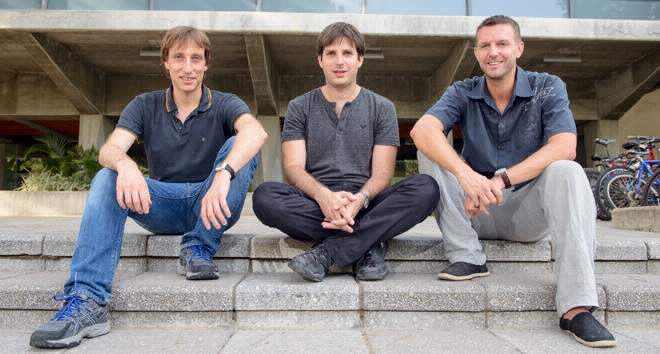Are you a journalist? Please sign up here for our press releases
Subscribe to our monthly newsletter:

When you mix cold milk into hot coffee, what happens? There is a bit of swirling, after which you get lukewarm coffee. The energy exchange between cold and hot regions brings the mixture to a new thermal equilibrium at a uniform temperature. Most natural systems we know undergo such dynamics: If they are not disturbed from the outside, they reach a state of thermal equilibrium in which energy – and any other form of information – is evenly distributed throughout. In this equilibrium state the system generally exhibits classical behavior. Even though the particles themselves obey the laws of quantum mechanics, as the mixing progresses and the system goes toward equilibrium, quantum phenomena diminish until they disappear completely. Are there exceptions to this rule – that is, can some many-particle quantum systems evade the classical thermal fate?
In results published recently in Science, Prof. Ehud Altman, research student Ronen Vosk and Dr. Mark Fischer of the Weizmann Institute’s Condensed Matter Physics, together with researchers from the Ludwig-Maximilian University of Munich and the Max Planck Institute for Quantum Optics, Germany, succeeded in creating a “many-body localized” quantum system in which the normal mixing of information does not take place. That is, despite the fact that the particles interact and scatter off one another, the system never reaches thermal equilibrium (think of coffee and milk in which there is no temperature exchange, so the milk stays cold and the coffee remains boiling hot). This is the only known stable state of matter to date that does not obey the regular rules of thermodynamics. In this unusual, insulating state, a “quantum memory” of the initial quantum state is maintained for indefinitely long periods.

This “many-body localized” state remains stable if there is sufficiently strong disorder, or randomness, in the static background forces affecting the particles. In the experiment, cold atoms moved and collided in a random background created by laser light. By varying the amount of disorder in the background forces, the scientists were able to induce a sharp transition between the “many-body localized” state and a more conventional state in which energy and information transfer does take place.
This unique phase transition is of fundamental interest because it presents a sharp distinction between a large macroscopic system exhibiting quantum behavior and one in which quantum phenomena are “washed away.” On the practical side, systems like this could have important implications for the development of devices for quantum information processing.